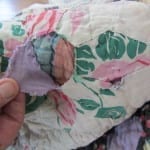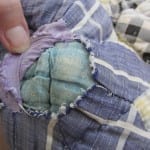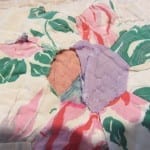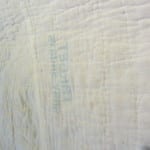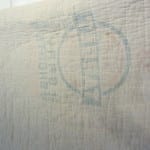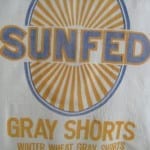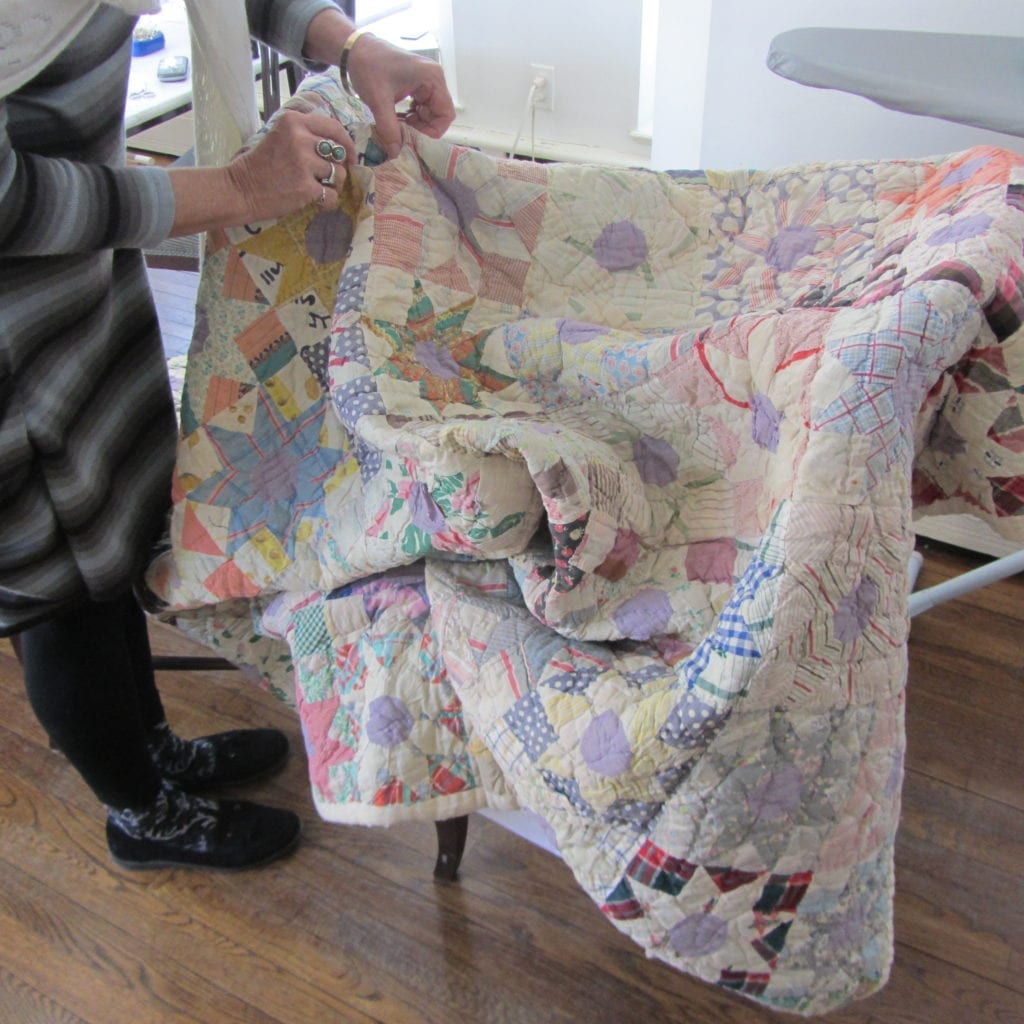The exterior of this quilt may look like any other, but there is something quite special going on under the surface here—it is two quilts in one (one quilt surrounding an even older quilt). We think the outer quilt was made between 1920-1940, when feed and flour sacks were commonly repurposed into dresses, towels, quilt backings, kitchen rags, as well as many other household necessities. Flour sacks were made of strong cotton to contain seed for animals, flour, potatoes, as well as alfalfa. They were also a way to provide housewives with “free” patterned cottons while purchasing necessities.
At the outset of World War II, there were dozens of U.S. textile mills producing feed sack material, from Bemis Brothers in Minneapolis, Minnesota, to Percy Kent of Buffalo, New York. Particularly collectible are feed sacks with prints depicting Disney characters or scenes from “Gone with the Wind,” as well as sacks that had patterns on them to help a busy homemaker turn them into an apron, quilt, or doll. By 1942, an estimated three-million Americans wore at least one article of clothing made from a feed sack.
The quilt in our studio is backed with cotton flour sacks. Printed on them are company names “TARGET GREY SHORTS, H I rooster, 100 pounds.” We believe the top of the outer quilt is made from various patterned cottons, repurposed from sacks as well. It is a family piece, from a plantation in Attala County, Mississippi. The owner of this beautiful quilt believes that his ancestors stuffed many of their quilts with the cotton that was grown on that land up until the 1960’s. He told us “…during a previous restoration of an even older quilt, from around the 1860’s, the restorer was finding all sorts of cotton chaff and seeds inside of the quilt, suggesting it was pulled directly from the plant.”
He wrote, “My Great Grandmother made all of our 20th century quilts in the front parlor room of the house. My dad, aunt, and uncle all remember how she used to make them as they were hanging down from some sort of contraption hanging from the ceiling, like a wooden hanger. She was the last one that made quilts in the family. Subsequent generations moved away to work as businessmen in Memphis and the quilt-making art was lost to modern, anonymous suburban living. My grandmother, in the last years of her life, moved back to the house to retire rediscovered lots of these old things, doing best to preserve them for future generations. I like to think that she knew one day her grandchildren would take these things and have them brought back to life.”
We are very excited to begin conservation on this wonderful piece of history!
